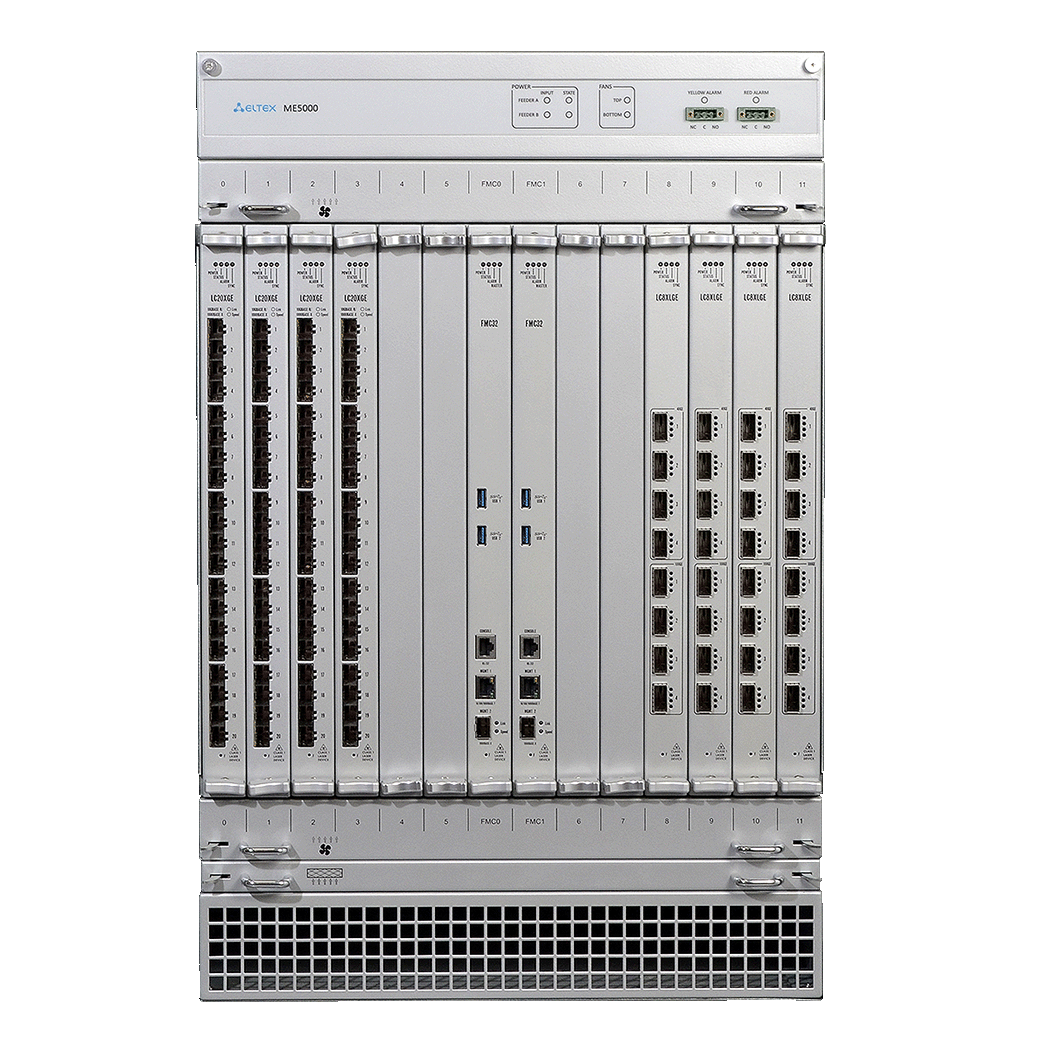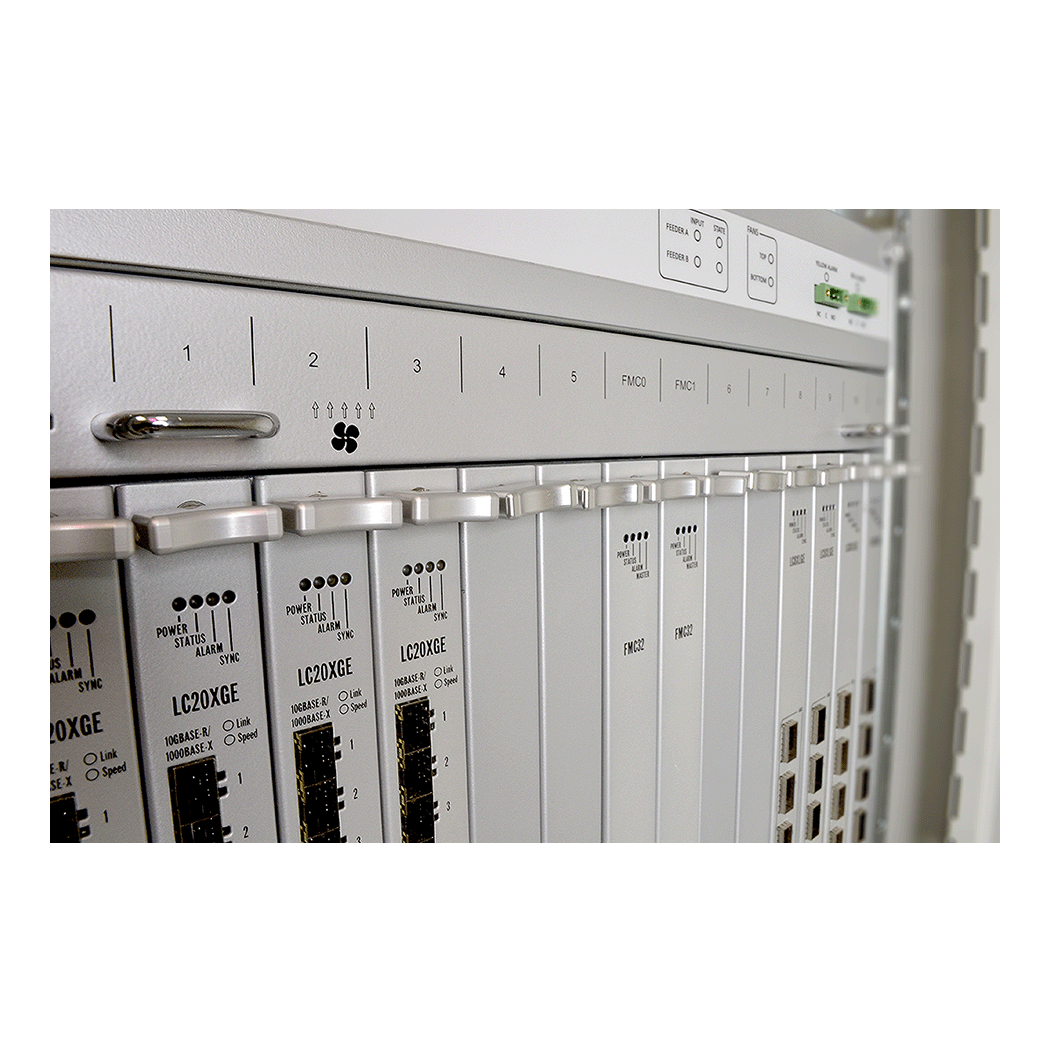MPLS router ME5000
- Performance:
- 1.4 Tbps
- Maximum bandwidth per slot:
- up to 276 Gbps with two FMC16 modules
- Interface cards:
- up to 12


Description
MЕ5000 is a series of high-performance routers with high port density designed to be used in data centers network core as well as on carriers’ networks as edge and aggregation routers. Modular design of devices ensures flexible scaling and customization both in terms of bandwidth and types of network ports. The platform provides the redundancy of nodes that define the whole system reliability and makes it possible to achieve high reliability figures.
Hardware platform
The modular router is a modern hardware platform with high port density. The modules are mounted in a chassis: standard 19” form-factor rack mount, housing size is 15U. The chassis contains two slots for installation of FMC switched fabric management modules and 12 slots for installation of LC line modules

Specifications
- Performance:
- 1.4 Tbps
- Interface cards:
- up to 12
- 10G Interface card:
- 20x10G SFP+
- MPLS Protocols:
- LDP, RSVP-TE
- MPLS services:
- L3VPN, VPLS, VPWS
- Multicast:
- PIM-SM, PIM-SSM, IGMP, NG-MVPN
- SyncE
- Hierarchical QoS
- Power supply:
- DC

Related products












